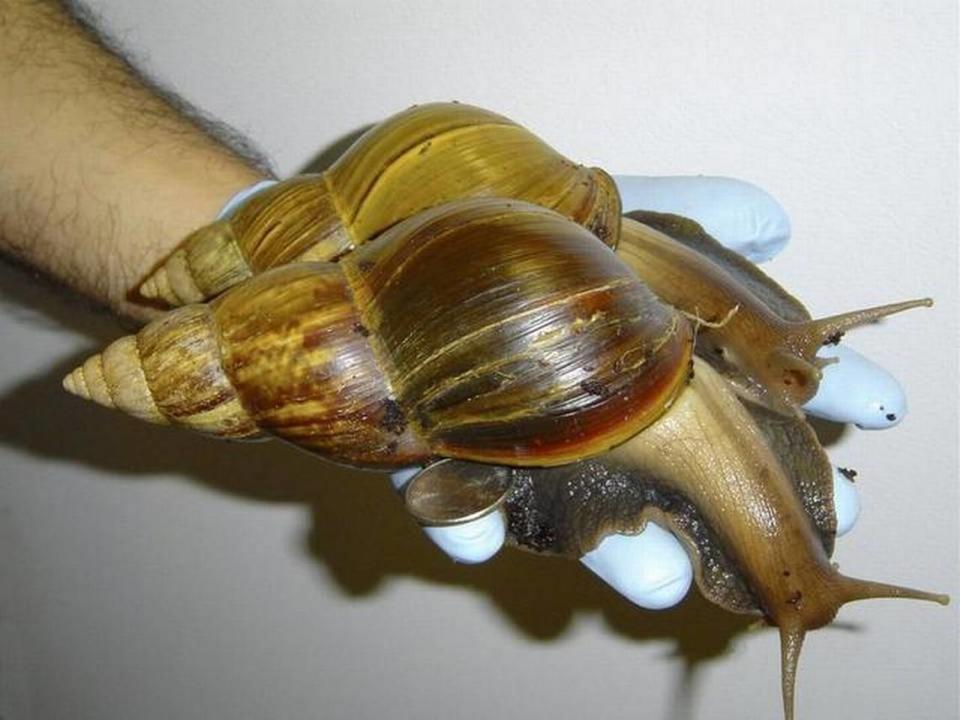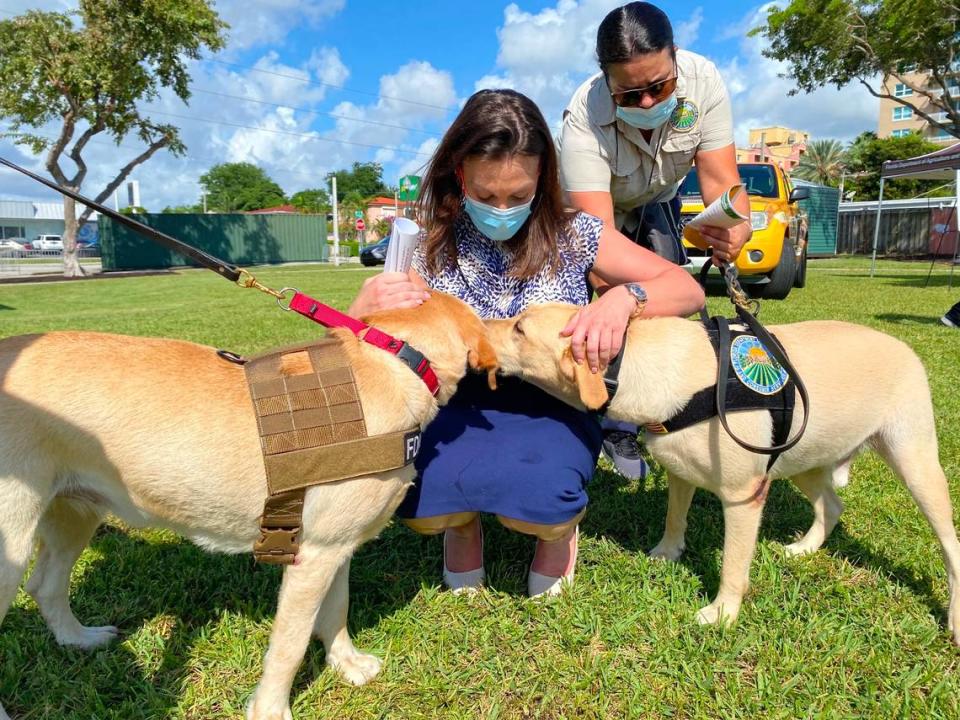A giant snail that can eat your plants and house eradicated in Florida. Again.
Florida has won — at least for now — a battle against an invasive snail that can grow to be eight inches long, eat 500 kinds of plants and the stucco off your house. The slimy invaders also carry a parasite that can cause meningitis in humans and pets, and is a deal breaker in global agricultural trade. The price tag for getting rid of the dangerous mollusks in the state over the past decade: $24 million.
The Florida Department of Agriculture and Consumer Services said Wednesday that it had eliminated the giant African land snail, an invasive species that was spotted in 2011 near Douglas Park in Coral Gables and quickly spread across Miami-Dade and parts of Broward.
Eradication means that a live snail hasn’t been spotted in Florida in three years. The invasive pest, which is originally from East Africa, had been around before, infesting South Florida in the late 1960s and 1970s after a boy returned from Hawaii with three snails and gifted them to his grandmother, who released them in her garden. The state was able to control the outbreak in 1975.
“I’m happy to say there’s still only one place on earth where the giant African snail has been eradicated. It’s right here, and now we’ve done it twice,” said Trevor Smith, director of the FDACS Division of Plant Industry. The snails are considered one of the most damaging in the world, and because of their potential to wreak havoc, the U.S. Department of Agriculture made it illegal to own or import them.

Apart from the risk to human and animal health, the snails love to eat fruits and veggies that Florida farmers grow, threatening a $250 billion industry. If there’s a risk that agriculture exports from Florida may harbor the pests, trade partners could refuse shipments from impacted areas.
They are hermaphrodites, so when two snails come together to mate, the two of them will generate more than a thousand eggs. To get rid of them, every single one must be destroyed, Smith said.
Not even buildings are safe when they’re around: If the snails don’t get enough calcium from the soil for their shells, they gobble up the stucco off the sides of houses, leaving a trail of stinky poop.
“It will eat your plants and eat your house,” Smith said.
The U.S. Department of Agriculture and the state of Florida spent a combined $24 million over the past decade on research into the creature’s biology and on trying to come up with efficient ways to kill them. Data collection was key, as officials were able to deploy resources more efficiently to areas where outbreaks were reported, Smith said.
Even with the help of technology, traditional strategies like mapping out sightings and manually removing the pests from people’s backyards were what led the state to control the spread. A total of 168,000 snails were collected in the past decade, mostly in west Miami-Dade. In the 1970s, 17,000 snails were collected in the first eradication program.
In recent years Florida enlisted the help of very important players in the fight against the snail: Casie and Mellon, two detection dogs that were trained to spot the slimy invader, even when they are underground.

The Labrador retrievers completed a rigorous six-month training course funded by USDA that involved learning to pick up the snail’s scent and getting a reward for sitting next to spots where the snails were present.
Even if they are among the largest species of snail in the world, the creature’s biology makes it hard to catch: they are more active at night, and they camouflage perfectly in South Florida’s lush habitats. Native Florida snails are smaller and live on trees, while the African land snails generally live on the ground, hiding in the grass and leaves. If it’s too dry or hot outside, they burrow inches deep into the soil and hide. During rain events — and South Florida has plenty of those — they come out in full force to take advantage of the moisture they need to stay alive.
They are also adaptable, feeling totally at home in people’s expensive landscaping as well as hiding in debris and old tires piled in backyards. The detection dogs were extra helpful when the state’s eradication teams needed to make sure that affected properties had been cleared of any sneaky snail, said Nichole Bushue, Casie’s handler at FDACS.
Officials aren’t sure how they got here before the 2011 discovery in Coral Gables, but a state investigation revealed that in 2010 dozens of giant African land snails were smuggled to Miami from Nigeria by a religious cult that used their mucus in healing rituals.
But they could have arrived on ships or cargo planes, said Florida Agriculture Commissioner Nikki Fried.
“Florida is a major port of entry for both people and goods. With that comes increased risk that the invasive species and diseases are brought in both intentionally and unintentionally,“ Fried said at a ceremony to mark the eradication at Douglas Park in Coral Gables, just a few blocks from where the latest outbreak was first identified in 2011.

